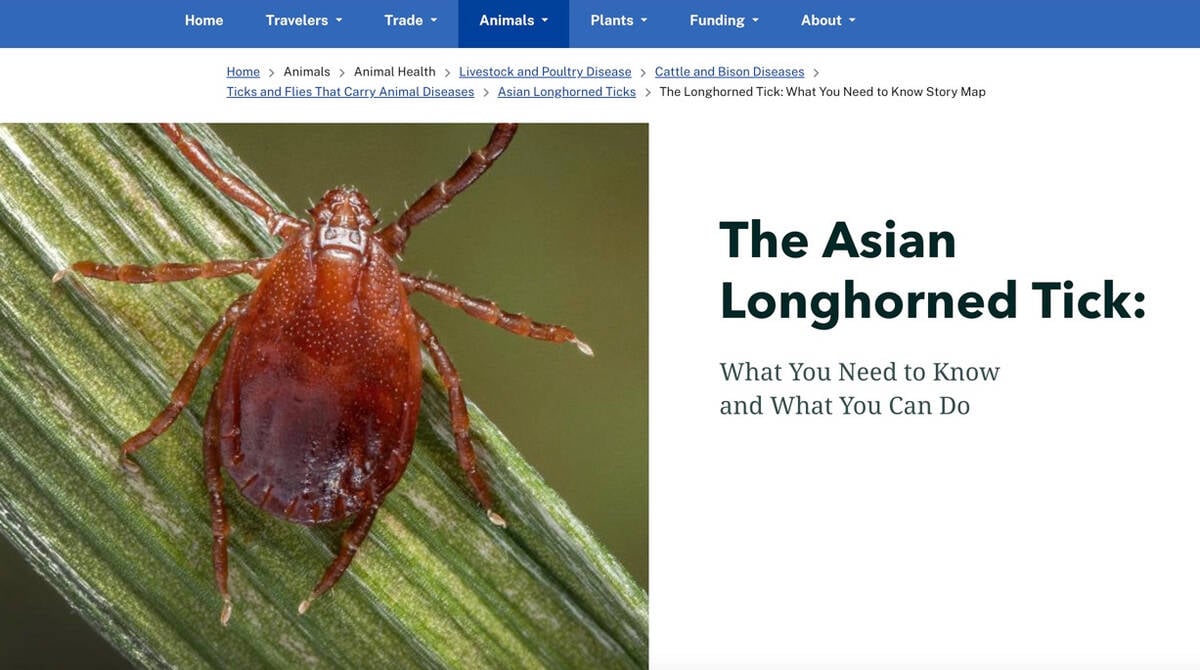COCHRANE, Alta. – Ray and Ann Marie Hauck’s first Boer goats arrived at their southwestern Alberta farm in 1993 as an experiment.
Today they operate Ram H Breeders, the largest Boer goat farm in North America. They have 1,000 goats, 600 of them purebred Boers.
The Haucks started farming in 1978 raising purebred Limousin cattle but with only a quarter section of land, it was hard to make a living without full-time work as realtors in the Calgary area. Diversification seemed to be the answer if they wanted to stay on the farm.
Read Also

New World screwworm not seen as trade threat
Canadian cattle producers shouldn’t be worried about the New World screwworm, which has become a massive concern for ranchers in Mexico and is threatening the southern United States
“The idea of making a living on a quarter section was something we just dreamed about once in awhile. When the opportunity became available, the decision was made quickly,” said Ray.
They became involved with the Olds College program when the first Boers came out of quarantine in April 1993. These were the first in Canada and the embryo transfer program has been accelerated to build herd numbers.
The Ram H herd quickly grew and the Haucks sold their cattle a year after the goats arrived.
The Haucks wanted alternate livestock with a practical purpose. With Calgary’s expanding ethnic community, providing goat meat was a likely prospect.
Similar in taste and texture to beef, goat meat is a staple among many of Canada’s ethnic groups. The Haucks keep track of festivals and religious holidays for potential customers such as the Polynesian, Chinese, Middle Eastern and Jewish communities.
Marketing was easy. Flipping through the yellow pages of a Calgary phone book, Ann Marie found the names and addresses of various ethnic community associations. They mailed flyers to them advertising fresh, Alberta-grown goat meat. The telephone started to ring, not just from Calgary but from as far away as Germany, England, Bangladesh and Nepal. A butcher familiar with halal slaughter methods, essential for traditional Muslims, was found in Calgary and Haucks now ship 10 to 50 goats a week, as long as there’s a supply of kids.
“The biggest problem is keeping up the supply,” Ann Marie said.
To deal with the meat demand, Canada could raise as many as one million Boer goats. Production is faster than cattle, with gestation only five months. Many does deliver twins or triplets.
Besides meat, producers are trying to build up breeding herds. About 2,500 animals are registered among 50 purebred breeders. Alberta dominates the industry.
Like many people who take on new breeds of animals, Ray and Ann Marie, along with their daughter Alanna, learn about caring for the goats one day at a time.
During last winter’s record cold temperatures they were surprised to see these South African goats grow heavy hair coats and adapt well.
The Haucks say with Canadian management a Canadian-style goat will develop similar to the way European cattle evolved into Canadian animals with built-in hardiness and desirable growth rates.
These lop-eared, heavily muscled goats thrive on marginal pasture land with plenty of brush and weeds. They appear to be a perfect fit for ranchers who practise holistic pasture management. Goats are browsers who trim plants from the top down and will graze in co-operation with cattle.
The Haucks say Boer goats may be the answer for new farmers who don’t have a lot of land or machinery. Eight goats need the same amount of pasture as one cow. Also, an adult can easily catch and handle a goat without restraints.
“If you have a problem with a goat, you can grab it by the collar and tie it to the nearest tree. Try grabbing a cow and tying it to a tree,” said Ann Marie.
They’re also prolific.
To speed herd growth at Ram H, purebred does are flushed and the embryos are transplanted to host dairy goats. They harvest up to 21 embryos per female. After the transfers, additional dairy goats are mated with purebred Boers to get halfbloods for the meat market or a breeding-up program. Purebred females are bred naturally 21 days after the embryo flush to produce more kids.
Ray and Ann Marie Hauck and daughter Alanna have no trouble selling their Boer goats for meat but also want to build up their breeding herd.















